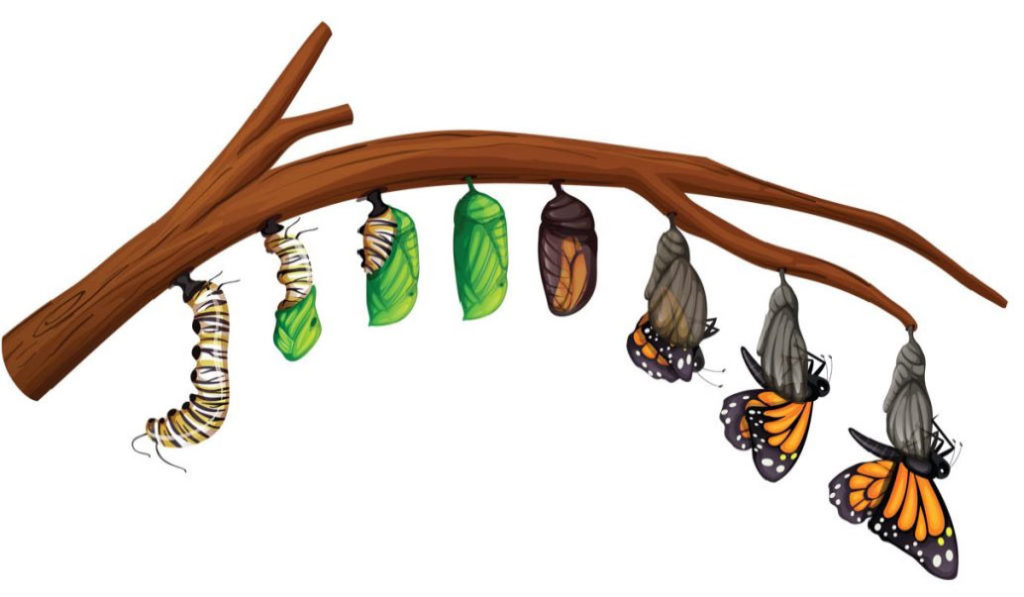Grade Level: 1st or 2nd
Content area: English Language Development
Standard identifiers:
- Grade 1: ELD.PI.1.10.Ex; ELD.PI.1.6.Em
- Grade 2: ELD.PI.2.6.Em
Objectives: Students will:
- Demonstrate understanding of ecosystems Describe the life cycle and/or migratory pattern of the monarch butterfly (collaboratively or independently, depending on grade level) based on their understanding of the short National Geographic video, image, and text of the butterfly life cycle and migratory pattern.

Assessment (informal):
- Students will demonstrate understanding by correctly ordering and labeling images of the butterfly life cycle. For more advanced students, they can explain, in their own words, what is happening at each stage.
Strategies for English Language Learners and Learners with Special Needs:
- Introduce non-content vocabulary that is new for students, such as caterpillar, butterfly, wings, habitat, etc.
- Write the word choices for fill-in the blank and life-cycle activities on the board.
Materials and Resources:
Instructional Sequence:
Introduction and explanation to students about the purpose of the lesson (5 minutes)
- Show students the picture of the butterfly life cycle on MVC’s Virtual Learning Module #1: The Monarch Butterfly webpage. Ask students if they recognize anything in the picture. Ask what do they think is happening in the picture. Explain that it is a picture of the life cycle of a monarch butterfly. There are names for the four stages of the life cycle. Monarch butterflies are amazing creatures that travel (migrate) thousands of miles!
Teacher modeling (10 minutes)
- Show the Picture of Monarch Butterfly Life Cycle and give students the Life Cycle Labeling Worksheet. Ask students what they think is the first stage of the life cycle. Point to each stage and ask them, “Is this the first stage?” When you point to the egg, ask students if they see the egg on their worksheets (it is number 1). Ask students if they see the word egg on their worksheet. Tell them to write egg on the first line.
Guided practice (10 minutes +10 minutes for additional worksheet)
- Move through the rest of the stages, having the students identify the correct stage on their worksheet and labeling the picture.
- Additional option: Guide students through the Life Cycle Facts Worksheet by asking questions for each statement.
- How many stages does a butterfly go through?
- What are the names of the stages?
- What does the female butterfly lay in the first stage? Where does she lay it?
- What is the second stage?
- What is the third stage?
- What is the fourth stage?
- What is another word for chrysalis, or the third stage?
- What is another word for larva?
Practice (independent) (15 minutes)
- Show the pictures, read the text, and/or show the video on the National Geographic Pictures, Text, and Video about Monarch Butterflies website. Perhaps show the video a couple of times (it is fast paced).
- Have the students complete the Monarch Butterfly Student Worksheet. They draw a monarch butterfly in its habitat and write something they learned about monarch butterflies.
Closure (5-10 minutes)
Have students share what they learned as a class or in small groups.
Monitoring for student learning/understanding:
- During independent practice, make sure students understand that butterflies’ habitats are forests/trees.
Take reflection notes on how the lesson went for your future reference.

